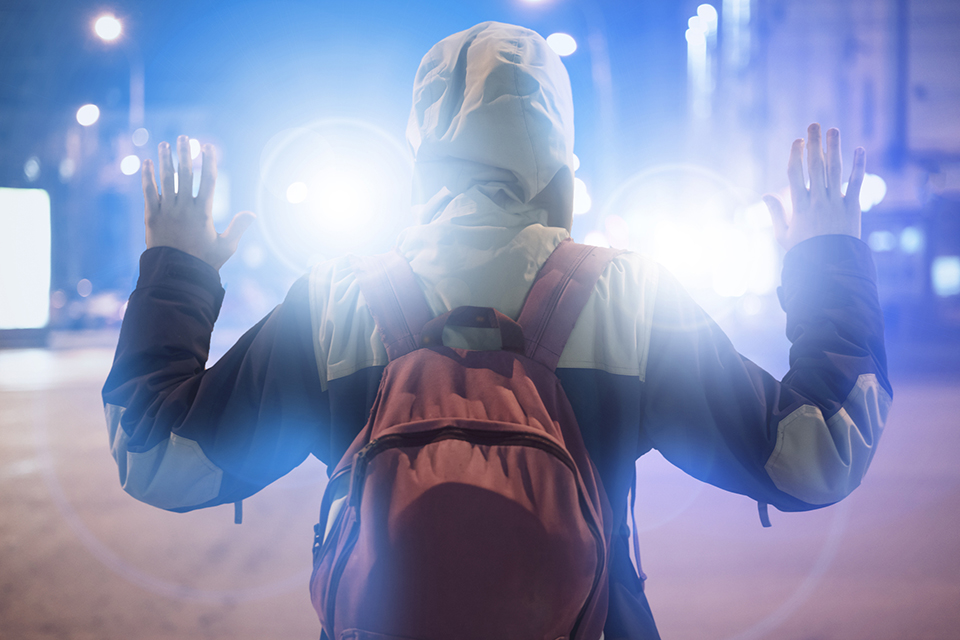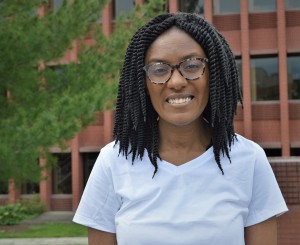CSUN Prof Examines How Juvenile Arrests Impact Youth of Color

High poverty, overcrowding in the home, mental health disruptions and community trauma are some factors that lead youth to offend, said CSUN criminology and justice studies professor Brianne Posey. This, in turn, can create a system in which young people are labeled as “juvenile delinquents,” a branding that can affect them and their families for the rest of their lives, she said. Photo by аил Руденко, iStock.
To the general public, juvenile crime is displaced and concentrated in certain neighborhoods but, in reality, it is because poverty is displaced, according to California State University, Northridge criminology and justice studies professor Brianne Posey.
High poverty, overcrowding in the home, mental health disruptions and community trauma are some factors that lead youth to offend, said Posey, who has a doctorate in criminal justice and criminology from Washington State University. This, in turn, can create a system in which young people are labeled as “juvenile delinquents,” a branding that can affect them and their families for the rest of their lives, she said.

Brianne Posey
“‘Juvenile delinquent’ is a media-driven word, which refers to someone aged 19 years or younger, who has committed a societal crime or a status offense,” Posey said.
She explained how youth labeled as “juvenile delinquents” are disadvantaged in all three sectors of the criminal justice system: policing, courts, and corrections.
“At the policing stage, there is a disproportionate number of arrests for youth of color,” she continued. “This leads people to believe that youth of color commit more crimes than youth that are white.”
Contrary to popular belief, Posey said, white youths actually commit crimes at similar rates to youth of color. But, she said, law enforcement is more likely to patrol and canvas for crime in neighborhoods heavily populated by people of color, rather than in the suburbs, which are mostly populated by middle class whites.
“If the police go into a community, any community, looking for crime, they will find it,” Posey said.
She added that studies have found that youth of color tend to engage in illegal acts out in the open, while white youth have the ability to engage in illegal acts in private spaces. “When crime is visible, it always leads to more arrests,” she said.
Once a young person is brought to trial and convicted, Posey noted the extreme disparities between the sentencing of youth of color and their white counterparts. “Youth of color are more likely to be convicted and receive harsher sentences. Youth of color are also disproportionately tried as adults,” she said.
Many times, Posey said, judges will base the severity of the sentence off family dynamics visible in the courtroom. Having a middle-class household and two present parents is a protective factor for youth because courts may see the youth as coming from a stable household, thus a sentence that includes probation might be seen a preferred option.
Conversely, youth raised in single-parent households, who come from indigent communities and youth of color are at risk for facing more punitive sentences, including incarceration, because, in the court’s eyes, they lack the proper “family structure,” needed to foster law-abiding behaviors and thus require more disciplinary sanctions.
Posey said young offenders of color also face another obstacle while their cases move through the courts. State appointed lawyers are underpaid and overworked, she said, which is why those who can afford it hire private attorneys who can focus almost exclusively on their cases.
For some families, hiring a private attorney can lead to economic consequences such as financial burdens, as well as social consequences such as anger and resentment among other family members, Posey said. That anger and resentment can continue to grow if the child is convicted.
“Having an incarcerated child takes a huge toll on the family as a whole, from parents, to siblings, to grandparents,” she said. “Something so emotionally and financially exhausting can cause family bonds to weaken and create life lasting conflict, trauma, and a cycle of re-offending. Posey concludes by reiterating that juvenile arrests in communities of color can create an unstable environment that helps no one; not the youth, not their family, and certainly not their community.”

 experience
experience